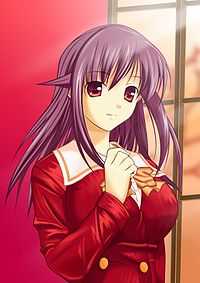Bishōjo

Bishōjo (美少女, literally "beautiful young girl", also spelled bishoujo) is a Japanese term used to refer to young and pretty girls, usually below university age. Bishōjo is not listed as a word in the prominent Japanese dictionary Kōjien. A variant named biyōjo (美幼女) refers to a girl before the age of adolescence.
In manga and anime
Bishōjo characters are seen in almost all genres of anime and manga, especially in dating sims and visual novels (also known as bishōjo games), and harem anime and manga. It is sometimes confused with the similar sounding shōjo demographic, but bishōjo refers to the gender and traits of the characters whereas "shōjo" refers to the audience. Although bishōjo is not a genre but a character design, series which predominantly feature such characters, such as "harem" or visual novels, are sometimes informally called "bishōjo series". Since one of the main draws of these series is typically the art and the attractive female characters, the term is occasionally perceived negatively, as a "genre" which is solely dependent on the marketability of cute characters rather than content or plot.
Contests
A televised beauty pageant, the Japan Bishojo Contest, has been run since 1985. Singing star Aya Ueto first became famous through this contest, at the age of twelve. Model and actress Ryoko Yonekura also won a bishōjo contest in 1992.
See also
| Look up bishōjo in Wiktionary, the free dictionary. |